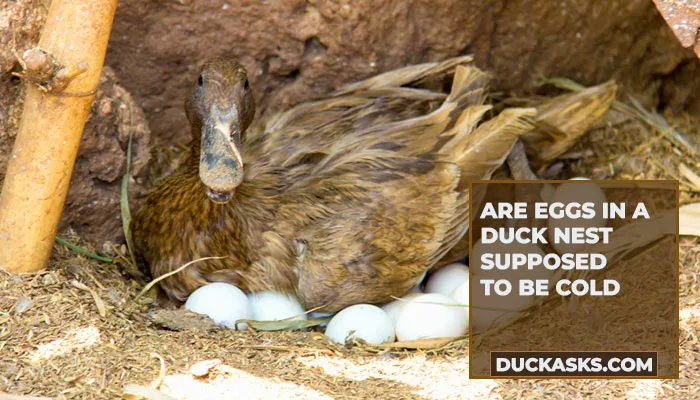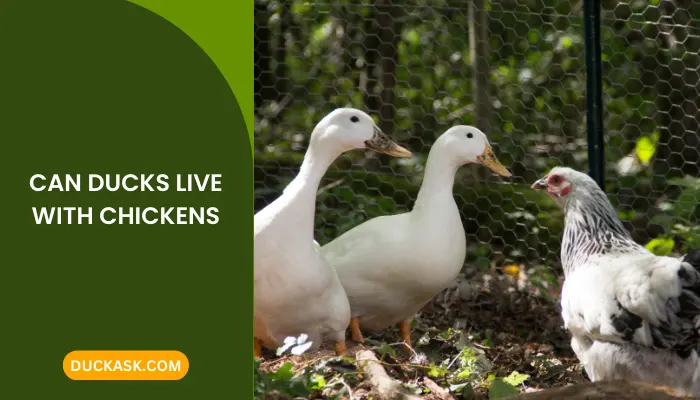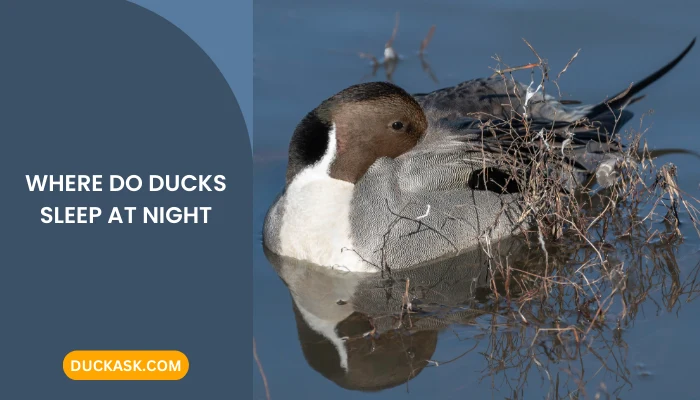Do Mallard Ducks Return To The Same Place? Migration And More Facts!
Mallard ducks are probably the widest-known ducks worldwide. Whether you want to breed or raise mallard ducks in Asia or North America, it is possible! This is because they are highly adaptable to different environments. But the question lies: do mallard ducks return to the same place?
Well, mallards are migratory birds and travel long distances for breeding, feeding, and during winter. Now, mallard ducks return to the same nesting place and sometimes to their wintering area. However, this raises many interesting questions regarding their homing and migratory ability.
Whatever questions you have regarding the migration of mallard birds, we’ve covered all of it here, exclusively for you!
Interested in similar topics on about ducks habitat:
When Do Mallards Return to the Same Nest?
Mallards usually return to the same breeding area to find a mate and nest every season rather than returning to their same nest. However, they typically use the general nesting area for multiple years.
Let’s dive deeper. Mallards primarily mate in the late winter season or early spring, and the female selects a nesting site. She lays a clutch of eggs with a nest built on the ground, mainly near a water source.

Once the eggs hatch, the ducklings leave the nest within a day or 24 hours and follow their mother to the close by water source. The female mallard may mate again and lay another clutch of eggs in a different location.
While mallards may not return to the same nest every time, they exhibit strong fidelity to their breeding zones.
What’s more interesting is that the same pair of mallards may use the same area for breeding for several years. And they may even go to the same water source or where it’s located. This behavior is designated site fidelity, which is common among several bird species, such as Tailorbirds.
Mallards Returning to the Same Place
Besides showing signs of nest-site fidelity, when it comes to returning to the same zone, generally, they migrate to their wintering grounds in the fall, and in the spring, they return to their breeding grounds. These fluffy feathered birds typically fly towards the southern hemisphere during winter.
While it’s expected that mallard ducks will not return to the exact place every year during the winter, they tend to return to the same general winter zone. It is often within a few hundred kilometers or even closer to their previous wintering site.
But why do they do this? This is because mallards, like any other creatures, adapt to specific habitats and ecosystems. And over time, they have learned where to find the necessary resources for surviving throughout the winter.
Another reason is that mallards are pretty social and like to move in flocks. Hence, they may return to the same wintering areas as their relatives or known flock members.
This helps them find regular feeding and roosting locations and a sense of protection from predators.
However, there’s a catch; some mallards may overwinter in the location they have nested earlier. Their decisions are affected by food availability, shelter, water sources, and quality.
When And How Far Do Mallard Ducks Usually Migrate?
As mentioned, mallard ducks migrate during winter to more comfortable wintering grounds. However, that’s a vague idea; ducks usually migrate to North America and Europe at the end of summer. To be more precise, the migration time is around September, or sometimes even as late as October, as soon there is mild winter.
In Siberia or Palearctic regions, ducks might even migrate as soon as August since winter becomes unbearable. And as for the time to return to their breeding grounds, this can be around March, April, and May.

Now concerning the distance of their migration, Mallard ducks from the Northern hemisphere usually migrate from Northern or Central Europe to the Mediterranean. For other duck varieties, some even fly from the Northern hemisphere to South Africa.
On the other hand, ducks found in the most northern zones, such as Siberia or Palearctic, don’t typically go that far. Central or Western Europe is their typically chosen area for migration.
In Northern America, mallard ducks move only a few hundred miles to the south when they sense winter trouble.
Honestly, there is no scientific answer to how far they migrate. They migrate as far as they need to search for food, a warm environment, and a suitable roosting site for winter. Often, this means only a couple hundred miles of flying.
For instance, some mallard ducks in the arctic or subarctic zones don’t fly past Scotland. But typically, mallards are known for flying greater distances, up to 800 miles, without a halt.
What Is Homing?
The process of many bird species generally returning to the exact location where they nested in the previous spring or the same wintering area is a unique ability.
They find these specific locations even though they stay away or do not travel to these spots for several months. This process of navigation is designated as homing.
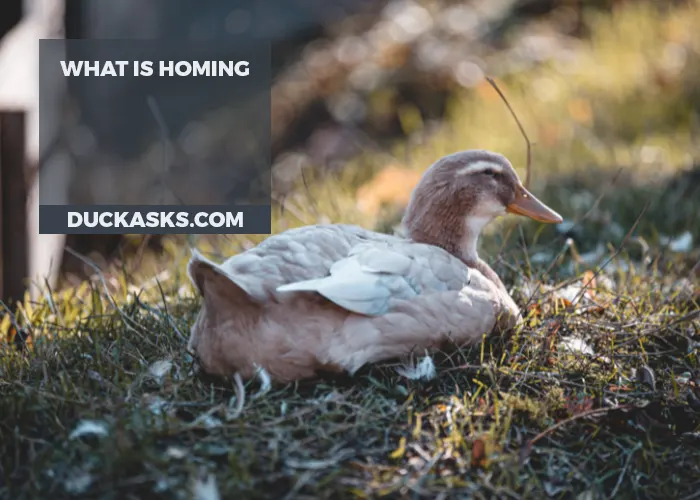
Homing instinct intensity and homing rates can differ from individual waterfowl species to species. For instance, in the case of adult canvasbacks, up to 75% of them return to the same place they nested in the previous season.
Again, wood ducks, goldeneyes, and buffleheads also have high return rates to their former nesting places.
However, there are also exceptions; for instance, only 10% of blue-winged teal return yearly to their same nesting zones.
Do Mallards Also Have a Homing Instinct?
Like many other ducks, mallards also have a homing instinct that allows them to navigate long distances.
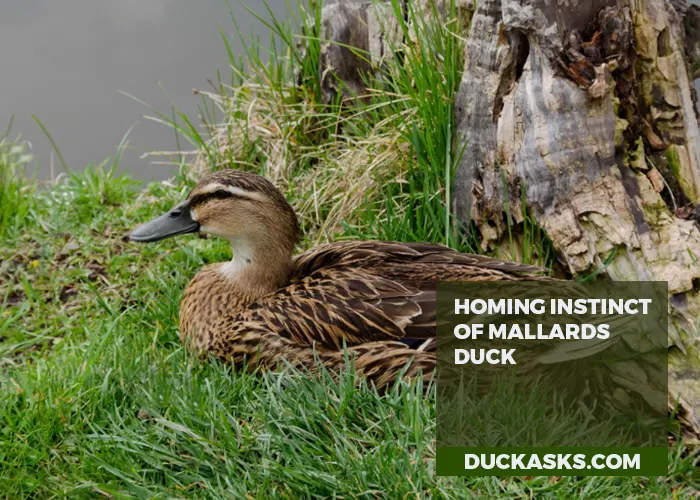
In the case of the Mallard breed among ducks, female mallards show a stronger homing instinct and repeatedly return to the same nesting zone. During 5 to 10 days of establishing their home range, mallards reach for their breeding grounds as soon as there is open water and begin looking for a nest location.
And within a week or so after establishing their nest sites or home zones, mallards start searching for their exact nesting area.
Ways Mallards Return to the Same Place
So how does this homing ability work for the mallards to allow them to return to the same place? Well, here are several factors which work behind this –

Excellent Homing Instinct
Various geographical cues help them find their way, starting from the position of the sun, the stars, and even the earth’s magnetic field. They can even take cues from different landmarks to navigate to their destinations.
Fantastic Memory
Mallards have excellent spatial memory and can remember the location of essential resources, such as water and food, and breeding and wintering sites. Besides, different and distinct landscape features also help them navigate correctly.
Environmental Cues
Environmental cues, like the smell of familiar plants or the sounds of water gushing from mountains, help mallard ducks navigate to breeding or wintering zones.
Social Cues
As you know, mallards are social birds and mostly travel in flocks. For navigation to familiar locations, they may even use the presence of other birds and their flight as a cue for migration.
Are Mallards Philopatry?
Simply put, philopatry implies an animal’s tendency to remain or return to its original area of birth during breeding seasons, especially in birds.

However, it’s essential to understand that not all mallard ducks will return to their natal zones for breeding. Some individuals may disperse to other areas, especially if they face competition for getting resources or encounter other environmental pressures.
The habit of returning to their birthplace is often seen in female mallards, accompanied by a male for mating and breeding. Some female mallards will even return to their birthplace year after year.
Parting Words
As seen from research and years of studies and observations, the waterfowl wild mallard ducks return to the same place.
Sometimes, they return to the same nesting zone for breeding and migrate to the same wintering ground for years. However, there are exceptions where the mallards do not tend to migrate when they find comfort in the nest they’re already living in.
Well, that’s all for today. But such as these, if you’re looking for more interesting facts and answers to your long wondered questions about waterfowl, stay connected with us through Facebook, Twitter, & Pinterest.
Image Credit:
- Canva.com/photos
Article References:
- https://www.hww.ca/en/wildlife/birds/mallard.html
- https://www.ducks.org/conservation/waterfowl-research-science/how-ducks-navigate
- https://gf.nd.gov/private-lands/landowner-resources/habitat-development/farm-ranch-guide/mallard




